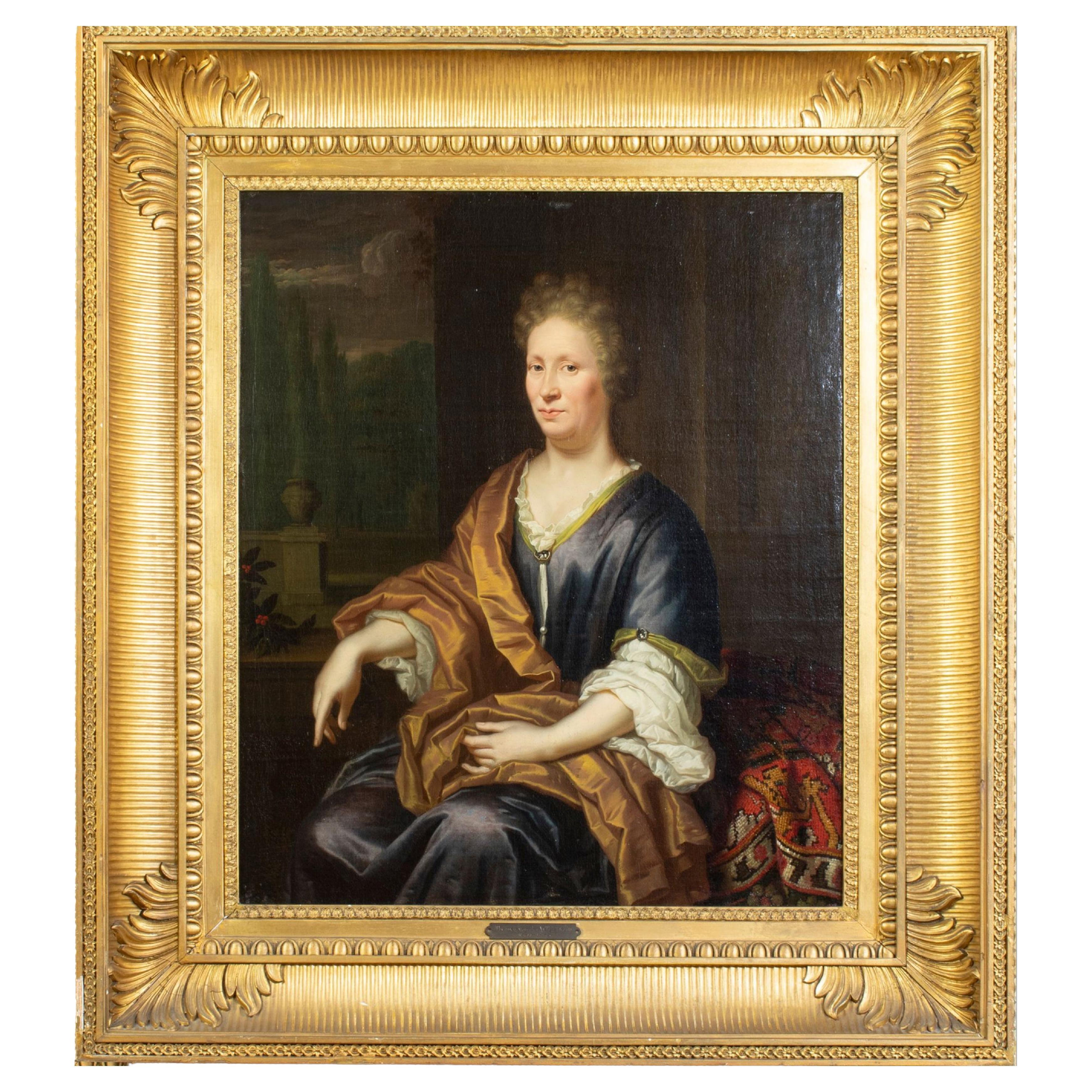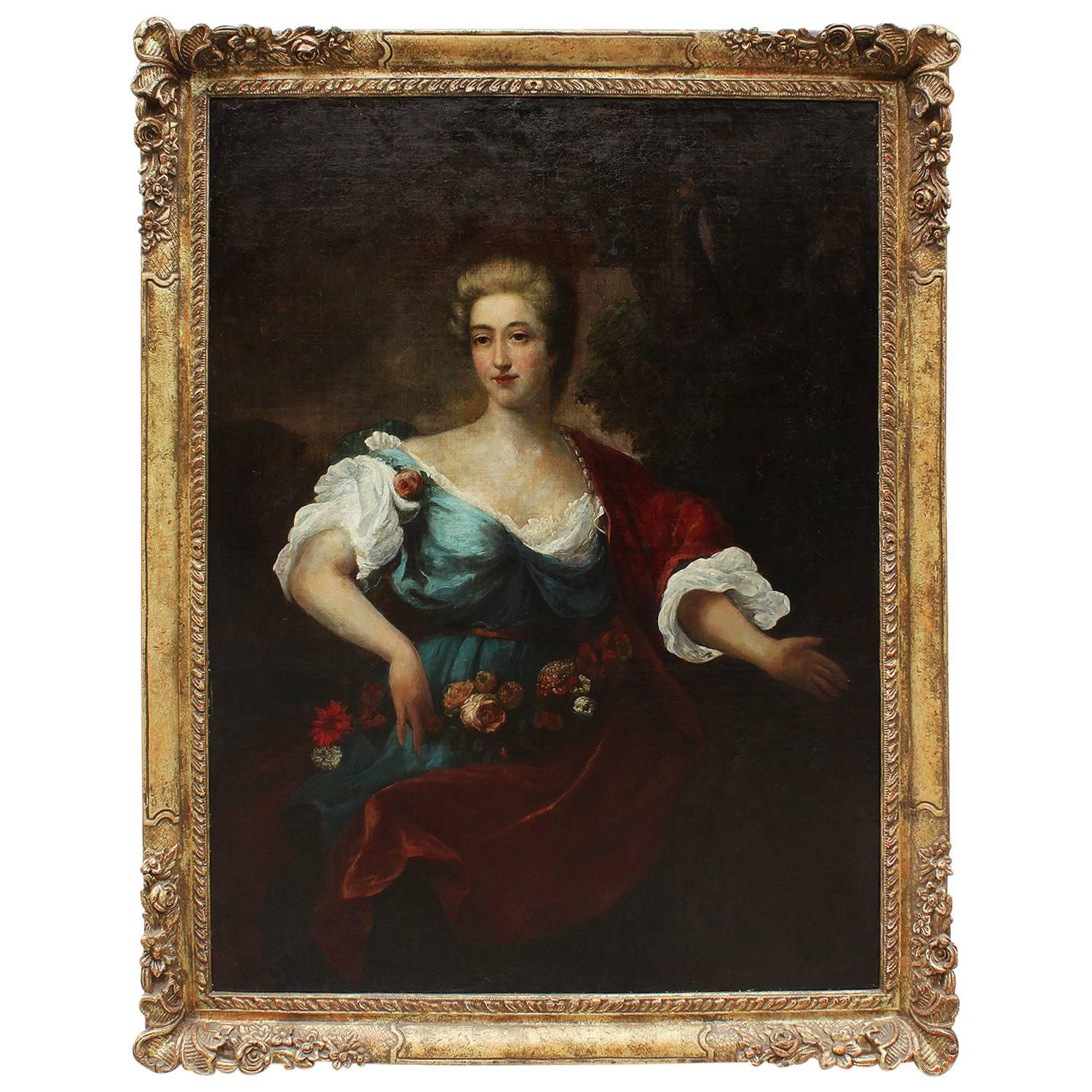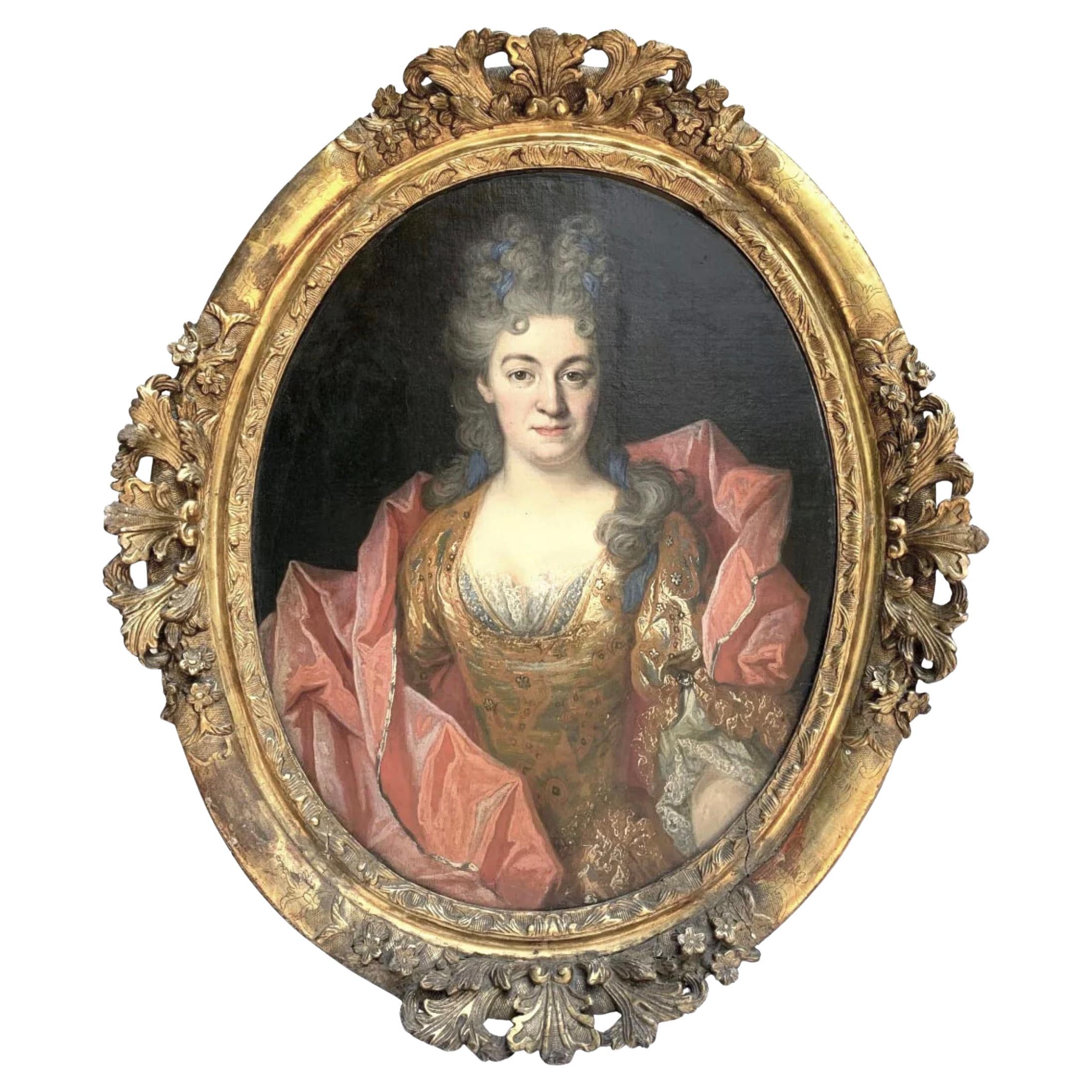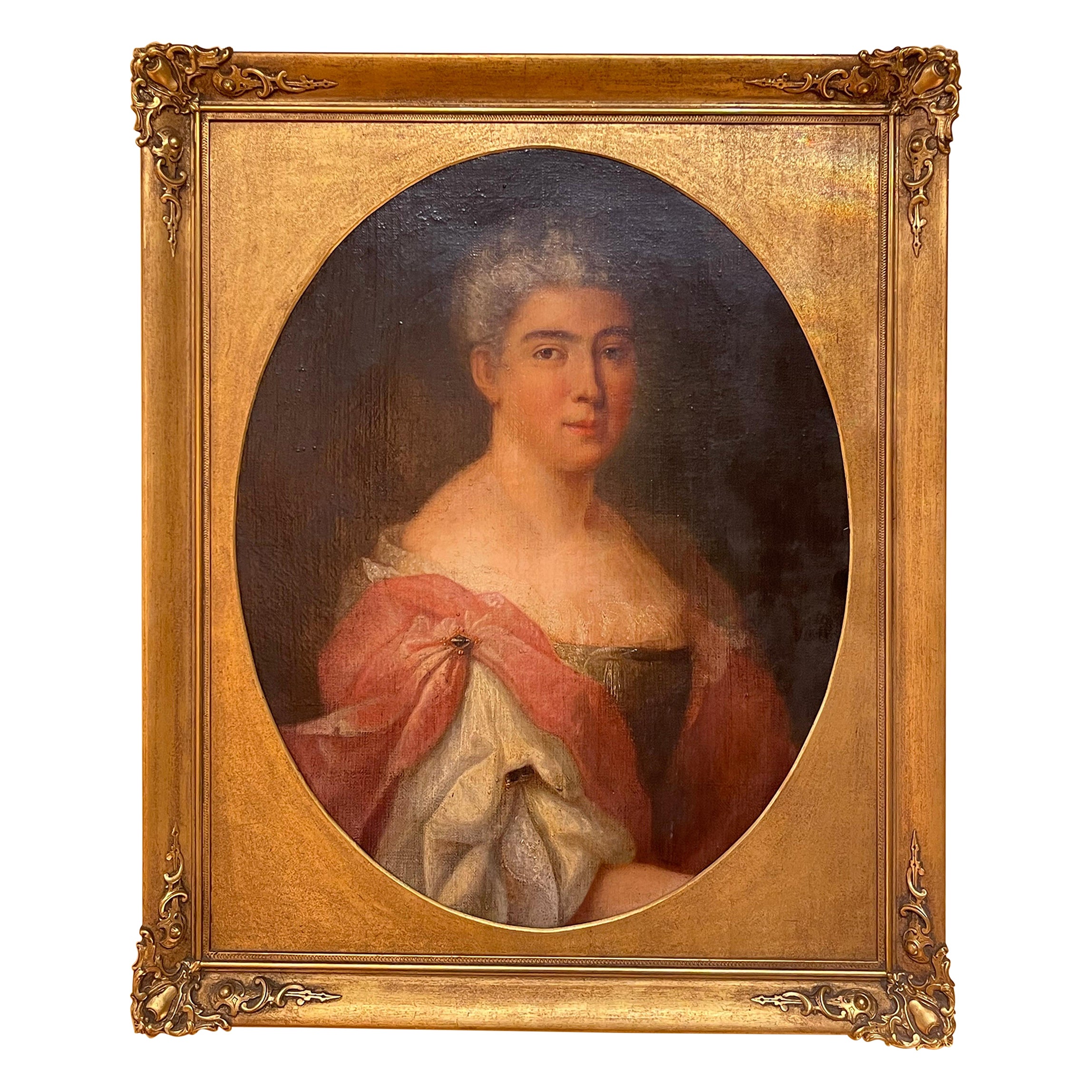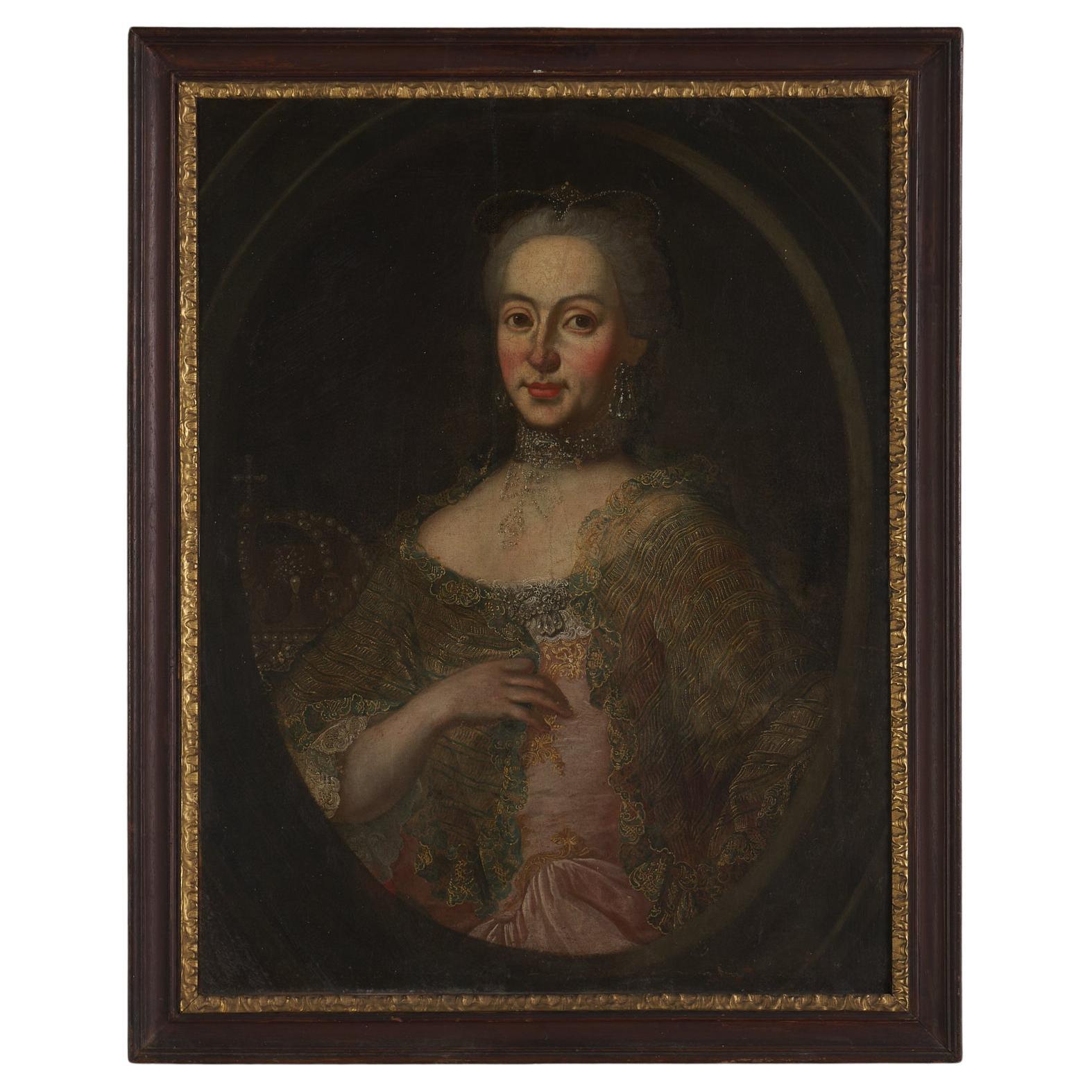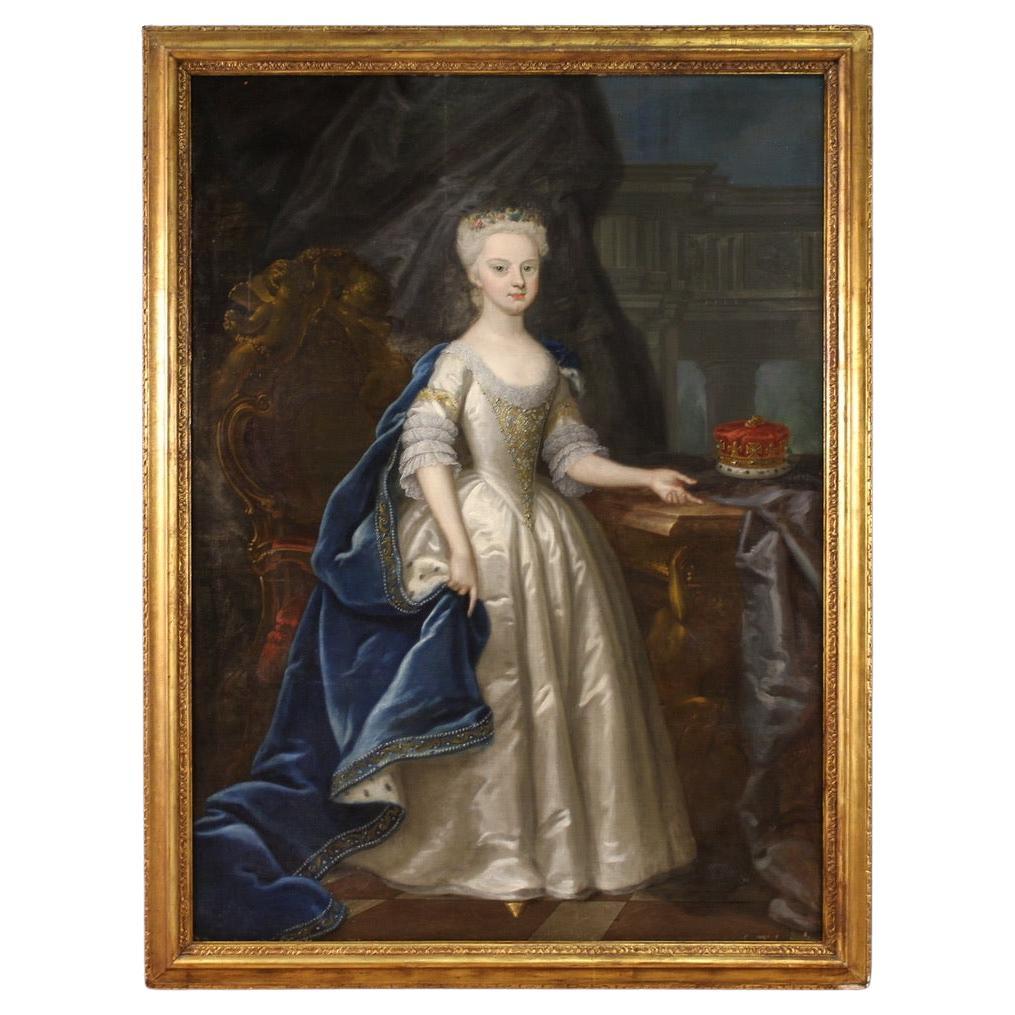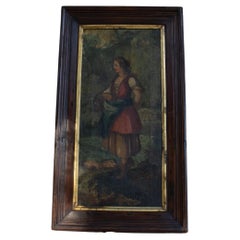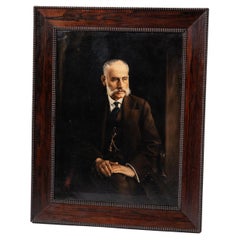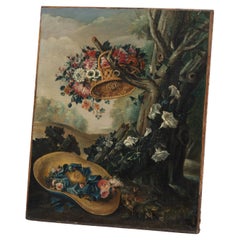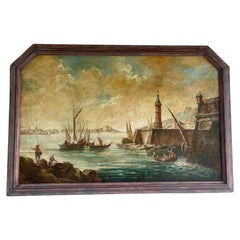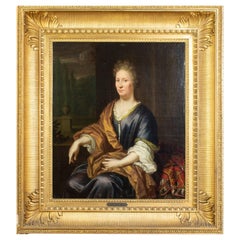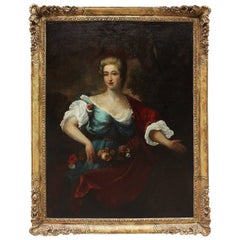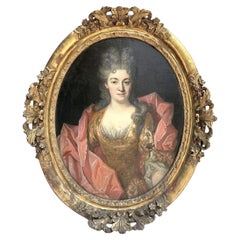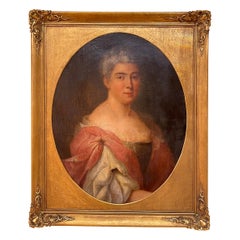Items Similar to Portrait of D. Maria Bárbara De Bragança, Circle of Louis-Michel Van Loo
Video Loading
Want more images or videos?
Request additional images or videos from the seller
1 of 13
Portrait of D. Maria Bárbara De Bragança, Circle of Louis-Michel Van Loo
$23,983.58
£17,841.36
€20,000
CA$32,841.72
A$36,515.53
CHF 19,066.39
MX$444,482.86
NOK 243,278.87
SEK 227,940.67
DKK 152,248.95
Shipping
Retrieving quote...The 1stDibs Promise:
Authenticity Guarantee,
Money-Back Guarantee,
24-Hour Cancellation
About the Item
PORTRAIT OF D. MARIA BÁRBARA DE BRAGANÇA (1711-1758), QUEEN OF SPAIN
Circle of Louis-Michel van Loo (1707-1771)
Oil on canvas
Her Royal Highness, the Infanta Maria Barbara of Braganza (1711-1758) was the first-born child of King John V of Portugal (1689-1750) and his queen consort Maria Anna of Austria (1683-1754). Born in December 1711, she had the Convent Palace of Mafra built in her honour following a vow made by her royal father. Her status as Princess of Brazil, inherent to 18th century Portuguese presumptive heirs, would however be superseded once the queen gave birth to two male princes, D. Pedro (1712-1714) and D. José (1714-1777), preventing her from ascending to the throne.
Daughter of one of the most illustrious monarchs of his time, Maria Barbara was carefully educated to become a fond admirer of the arts, and of music in particular, having had the Italian composer Domenico Scarlatti (1685-1757) as her music teacher.
On the 10th January 1723 the young princess was betrothed to the Infante Ferdinand of Spain (1713-1759), eldest son of King Philip V (1683-1746). Six years later, on the 19th January, she entered her new country in a carefully choreographed ceremony that became known to history as the “Exchange of the Princesses”. This unique event took place on a specially built Bridge-Palace, a wooden, luxuriously decorated structure that included various modules and rooms, on both banks of the river Caia, the natural border between the town of Elvas in Portugal and of Badajoz in Spain. Simultaneously, on the same day that the Portuguese Infanta crossed the border to marry the Spanish Crown Prince, her new sister in law, the Infanta Mariana Victoria of Bourbon (1718-1781), her husband’s sister, crossed the same bridge in the opposite direction to marry Prince D. José, the Portuguese heir to the throne.
Once married, Maria Barbara would spend 17 years as Princess of Asturias, only becoming Queen of Spain at her husband’s accession following the death of Philip V in 1746. She is portrayed in the 1743 painting by Louis-Michel van Loo (1707-1771) now in the Prado Museum, in which Philip V had himself represented with all his close family.
The new Queen would take an important role at court eventually becoming the liaison between her husband and the King of Portugal, particularly throughout the negotiations for the Treaty of Madrid (1746-1750). Maintaining her interest in music, she patronized the Italian castrato singer Farinelli (1705-1782) while remaining close to her old master Scarlatti, having herself composed some sonatas for a large orchestra. She would also commission and fund the building of the Royal Salesians Monastery complex in central Madrid, where both her and Ferdinand VI are buried.
The portrait we are presenting for sale shows the Queen in half-length, turning left at three quarters. She is wearing a blue low-cut dress embroidered with flowers and foliage, over a lace cuffed white blouse, and an ermine cloak pined on the left-hand side by a diamond broach. The powdered hair style is held sideways by a seven diamond and black plume headdress and topped by a small gold and pearl crown. The right arm rests on a cushion while the left hand, at chest height, holds a miniature male portrait.
The Infanta’s features are analogous to the 1725 portrait by the painter Domenico Duprà (1689-1770), also in the Prado Museum collection. Further similarities can be found in another portrait by Louis-Michel van Loo, in which a seven diamond and black plume headdress is also present. In this work, the cushion supporting Maria Barbara’s right arm has also some obvious similarities to our painting. The same diamond headdress reappears in Van Loo’s above-mentioned portrait of Philip V’s family dated from 1743.
It is nevertheless in Lisbon’s Ajuda National Palace that it is possible to find an almost identical depiction of the Infanta holding a miniature portrait of her husband. In it, the future Ferdinand VI is portrayed facing right at three quarters and wearing a curly wig, suit of armour, the golden fleece insignia and a blue band, in a composition that closely resembles an 18th century Spanish school painting that appeared in the art market in January 2016.
Another detail common to various portraits of the Portuguese Infanta and Queen of Spain is the small gold and pearl crown on her head. In another Van Loo painting, also from the Prado Museum, in which Maria Barbara is portrayed as Queen, this crown is represented together with a headdress similar to the one previously described. Another two paintings by the same artist, at the Royal Academy of Saint Ferdinand, include the same ornament.
We must also refer the paintings by the artist Jean Ranc (1674-1735). In one, dating from 1729 (Prado Museum), the Infanta is depicted outdoors holding a flower bouquet and wearing a yellow silk dress with red cloak, and a set of diamond and ruby jewellery that includes a headdress similar to the one present in our portrait. Another work by the same artist, belonging to the Complutence University of Madrid, depicts the Infanta sumptuously dressed in identical colours to our painting and wearing an elaborate headdress and diadem.
These portraits, beyond their iconographical importance as contemporary records of the Infanta and Queen Maria Barbara, are also illustrative of 18th century fashion for jewelled head dressing. Often, flowers were combined with joyful adornments, composing almost theatrical displays that would reinforce the ostentatious nature of the image. The ornamental flowers and the chromatic character of the jewels would complement the luxury of the colourful dresses in blue, crimson, green or other silk shades, in compositions whose sole purpose was to highlight a royal sitter’s wealth and power, becoming an essential statement accessory within the strict court protocols and codes of conduct.
Circle of Louis-Michel van Loo (1707-1771)
Slowly but steadily, the resolute, tranquil and dignified attitude of Renaissance and Baroque portraiture becomes artificial and presumptuous. Mid 18th century society favours elusive expression and psychological deepness, albeit limited to the face, that, with emphasis on detail, on the rich colour palette and on changing costumes and landscapes, associated to the courtliness of gestures, creates a strongly artificial environment while maintaining a highly poetic intrinsic character.
Louis-Michel van Loo followed a dynasty of famous Dutch origin artists that had settled in France. Initially taught by his father, Jean-Baptiste von Loo (1684-1745), the younger van Loo studied in Turin and Rome and frequented the Paris Academy. In Rome he worked with his uncle Charles-André van Loo (1705-1765) and become a painter for the Turin Court. In 1737 he arrived in Spain being summoned by Philip V to succeed Jean Ranc as painter of the king’s chamber.
In Madrid, his work covers the numerous Court commissions and the Royal Saint Ferdinand Fine Arts Academy, of which he was a founding member and director for the Painting department in 1752. Is production at court consisted essentially of numerous portrait paintings, often Royal gifts, in which he was assisted by students under his supervision, such as Benoit Verdot.
Louis-Michel van Loo was often considered an almost exclusive painter for the Spanish Royal family. This assumption is however a grossly mistaken appreciation of his artistic production that forgets his mythological paintings, tapestry cartoons and the various aristocratic and society portraits that he has left us. His extensive production reveals the dominance of the Italian hold over the French. In his portraits, it is possible to perceive the involvement of the actors in the performance and in the pomp that corresponds to their social status. This is equally due to his chosen backgrounds of imposing architectural compositions, adorned by magnificent drapery and accessories, that contribute to creating a sumptuous atmosphere, as is evident in the current portrait.
After Philip V’s death in 1746, van Loo becomes the main painter of his successor Ferdinand VI, having painted numerous portraits of both the king and his consort Maria Barbara of Braganza. Accordingly, the various similarities between this work and others by the same painter, which portrait the same sitter, reinforce our assessment that we are facing a high-quality work by one in his close circle.
- Creator:H. van Loon (Artist)
- Dimensions:Height: 40.75 in (103.5 cm)Width: 32.88 in (83.5 cm)Depth: 1.19 in (3 cm)
- Style:Baroque (Of the Period)
- Materials and Techniques:
- Place of Origin:
- Period:
- Date of Manufacture:1707-1771
- Condition:
- Seller Location:Lisboa, PT
- Reference Number:1stDibs: LU7365234526302
About the Seller
5.0
Vetted Professional Seller
Every seller passes strict standards for authenticity and reliability
Established in 2018
1stDibs seller since 2022
14 sales on 1stDibs
Typical response time: 5 hours
- ShippingRetrieving quote...Shipping from: Lisboa, Portugal
- Return Policy
Authenticity Guarantee
In the unlikely event there’s an issue with an item’s authenticity, contact us within 1 year for a full refund. DetailsMoney-Back Guarantee
If your item is not as described, is damaged in transit, or does not arrive, contact us within 7 days for a full refund. Details24-Hour Cancellation
You have a 24-hour grace period in which to reconsider your purchase, with no questions asked.Vetted Professional Sellers
Our world-class sellers must adhere to strict standards for service and quality, maintaining the integrity of our listings.Price-Match Guarantee
If you find that a seller listed the same item for a lower price elsewhere, we’ll match it.Trusted Global Delivery
Our best-in-class carrier network provides specialized shipping options worldwide, including custom delivery.More From This Seller
View AllXIX Century Portuguese Peasent Woman, Oil on Canvas
Located in Lisboa, PT
This magnificent painted oil canvas, depicts an anonymously beautiful peasant women on a lush surrounding of forest and bushes.
Portuguese intelectual work of as well an anonymous painter, the female traits of her face are well represented and also on her garments.
She is carrying a basket full of harvested country flowers...
Category
Antique Mid-19th Century Portuguese Paintings
Materials
Canvas
Portrait of a Gentleman (Vilaça), Signed and Dated. A. Alves Braga 1923
Located in Lisboa, PT
This remarkable early 20th-century Portuguese portrait, painted by A. Alves Braga in 1923, showcases the refined technique and attention to detail characteristic of the artist. The s...
Category
20th Century Portuguese Paintings
Materials
Canvas, Wood
$2,788 Sale Price
25% Off
Oil on Canvas Representing Flowers. 19th Century French School
Located in Lisboa, PT
Oil on canvas representing flowers. 19th century French School.
Category
Antique 19th Century French Paintings
Materials
Canvas
French 18th Century Oil on Canvas Representing a Harbor with Boats
Located in Lisboa, PT
An oil painting on canvas representing a harbor with boats, in Marseille, and attributed to the Joseph Vernet School. France 18th century.
Joseph Vernet was a prominent 18th-century...
Category
Antique 18th Century French Paintings
Materials
Canvas
Femme au Jarre Oil on Canvas
Located in Lisboa, PT
Femme au Jarre, Oil on canvas.
20th century.
Category
20th Century French Paintings
Materials
Canvas
Italian Renaissance marble bust of Diana, 16th century
Located in Lisboa, PT
his exquisite marble bust represents Diana, the Roman goddess of the hunt, the moon, and nature, and is a remarkable example of Italian Renaissance sculpture from the 16th century. C...
Category
Antique 16th Century Italian Busts
Materials
Marble
You May Also Like
Thomas VAN DER WILT (1659-1733) "Portrait of Noble Woman"
By Europa
Located in Madrid, ES
Thomas VAN DER WILT (1659-1733) "Portrait of Noble Woman",
oil on canvas
55cm x 46cm without frame
65cm x 56cm with frame
very good conditions
Thomas van der Wilt (1659–1733) was an...
Category
Antique Early 18th Century Dutch Baroque Paintings
Materials
Paint
French 18th-19th Century Oil on Canvas Portrait of Lady, after Jean-Marc Nattier
By Jean-Marc Nattier
Located in Los Angeles, CA
A very fine French 18th-19th century oil on canvas portrait of a posing lady with flowers, after Jean-Marc Nattier (1685-1766) within an ornate gilt wood carved frame, circa 1800.
...
Category
Antique Early 19th Century French Louis XV Paintings
Materials
Canvas, Giltwood
$11,960 Sale Price
20% Off
Circle of Nicolas de Largillière 1656 -1746 Portrait of a Noble Lady
By (circle of) Nicolas de Largillierre
Located in Rio De Janeiro, BR
This striking oval portrait, attributed to the circle of Nicolas de Largillière, exemplifies the refined elegance and artistic sophistication of late 17th to early 18th-century Frenc...
Category
Antique Late 17th Century French Baroque Paintings
Materials
Canvas
Antique Portrait / Oil Painting of a Noblewoman, France 18th Century
Located in Berlin, DE
Antique portrait / oil painting of a noblewoman, France 18th Century
Painting painted oil on canvas, oval stretcher. Portrait of an eagle lady, probably ...
Category
Antique 18th Century French Paintings
Materials
Canvas
Continental School Oil Portrait of Maria Theresa (1717-1780)
Located in Los Angeles, CA
Continental School oil portrait of Maria Teresa: Portrait of Maria Theresa (1717-1780), Archduchess of Austria, Holy Roman Empress, Queen of Hungary and Bohemia
This portrait was ow...
Category
Antique 18th Century French Paintings
Materials
Canvas, Wood
18th Century Oil on Cavas Antique Painting Princess Portrait, 1730
Located in Vicoforte, Piedmont
A splendid portrait painting of a noblewoman from the first half of the 18th century. Painting oil on canvas depicts a young aristocrat standing before a Baroque throne, using a pict...
Category
Antique 1730s Austrian Paintings
Materials
Canvas
More Ways To Browse
Pearls Antique Crown
Gold Half Circle
Hand Holding Pearl
Baroque Gold Cross
Gold And Black Dress Embroidered
Lisbon Antique
French Crown Jewels
Antique Portuguese Jewelry
Italian 19th Century Tapestry
River Pearl Jewelry
Dutch Artist Black And White
Spanish Baroque Chest
Hand Painted Blouse
Austrian Costume Jewelry
Embroidered Silk Painting
Gold Arm Cuff
18th Century Spanish Jewelry
Italian 18th Century Tapestries
